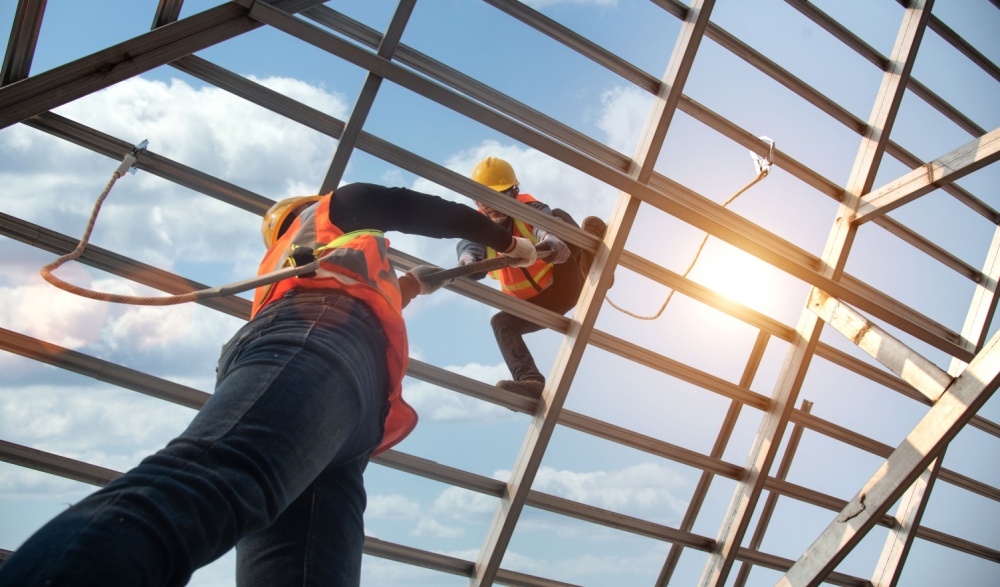On construction sites and in industrial settings, workers consistently face hazards that require proper training to handle. One of the most common risks is falling while working from heights. Fall protection training is crucial for ensuring safety but is also a key factor in advancing your career in these high-risk industries. Equipping yourself with the knowledge and skills provided through fall protection training can unlock new opportunities, enhance your reputation, and contribute to a safer, more productive work environment.
The Importance of Fall Protection Training for Career Advancement
Fall protection training is necessary for anyone working in construction or industrial settings. It provides workers with the knowledge to identify and mitigate fall hazards, ensuring they can perform their duties safely and effectively. This training is not just about compliance with safety regulations; it’s about empowering workers to take control of their safety and the safety of those around them.
Workers who take fall protection training demonstrate their commitment to safety, making them more valuable to employers. In industries where safety is a top priority, having comprehensive fall protection training can set you apart from other workers, opening doors to promotions, leadership roles, and specialized positions that require advanced safety training.
Creating Awareness About Fall Hazards
One of the first steps in fall protection training is creating awareness about the various fall hazards present in the workplace. Understanding the risks is crucial for preventing accidents and injuries. In construction and industrial environments, workers often encounter uneven surfaces, unprotected edges, and inadequate guardrails, all of which can lead to serious falls if not properly managed.
By identifying these hazards and understanding the potential consequences of falls, workers become more vigilant and proactive in taking necessary precautions. This heightened awareness protects the individual worker and contributes to a safer workplace for everyone, which leads to higher job satisfaction.
Fall Arrest Training for Professional Development
The benefits of fall arrest training go beyond safety; they also include personal and professional growth. Workers who undergo fall arrest training acquire enhanced safety skills, increased confidence, and a deeper understanding of how to protect themselves and their colleagues. This training provides workers with the tools they need to navigate high-risk environments safely, making them more effective and reliable in their roles.
Fall arrest training can lead to better job performance and increased job satisfaction. When workers feel confident in their ability to perform tasks safely, they are more likely to excel in their roles and take on more responsibility, which can lead to career advancement.
Promoting a Culture of Safety
A strong safety culture is essential for any organization, and fall protection training plays a critical role in promoting this culture. When workers see that their employers are committed to safety, they are more likely to take safety protocols seriously and engage in training programs.
Leaders in the workplace must set an example by actively participating in safety initiatives and fostering a place where safety is a shared responsibility. This safety culture protects workers and enhances their sense of belonging and morale, leading to higher levels of job satisfaction and productivity.
Boosting Employee Morale
Fall protection training can also significantly boost employee morale. Workers who feel safe and valued by their employers are more likely to remain loyal to the company and be satisfied with their jobs. High morale leads to increased productivity, as employees are more engaged and motivated to perform.
When employees are confident that their safety is a priority, they can focus on their tasks without fear, contributing to a more positive and productive work environment. This can lead to better teamwork, lower turnover rates, and a stronger company culture.
Continuous Evaluation and Improvement
For fall protection training to remain effective, it must be continuously evaluated and improved. Organizations should regularly review and assess training program outcomes, gather workers' feedback, and make necessary adjustments to keep the training relevant and up-to-date.
By committing to continuous improvement, companies can ensure that their fall protection training programs are always aligned with industry best practices and evolving safety standards. This not only protects workers but also enhances the company’s reputation as a leader in safety.
Fall Protection Training from AIP Safety
AIP Safety’s Fall Protection Training is designed for workers in various industries, including construction, plumbing, electrical, and steelwork, who perform tasks at elevated heights. Our comprehensive course in Calgary covers everything from equipment inspection to the proper use of fall arrest and restraint systems, all in accordance with CSA Guidelines and Alberta’s OH&S regulations.
Whether you’re looking to comply with safety standards or advance your career, our fall protection training course offers comprehensive practical knowledge and hands-on experience you need to work safely and confidently at heights.

